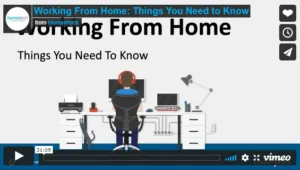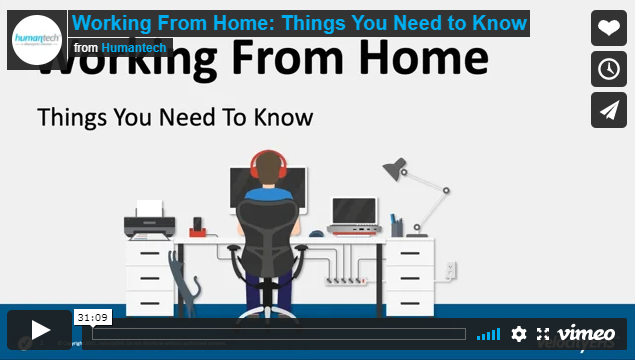As we continue to work from home, and as organizations adapt to allow employees to stay remote in the future, it is important to understand what ergonomics is and why we should care.
- Ergonomics is defined as the relationship between a human and his or her work environment.
- 67% of attendees polled in a past webinar reported that their workers were experiencing more workplace stress and discomfort since COVID-19; 70% of attendees said their playbook had little or no mention of office ergonomics.
This tells us that people need help to redesign their workspace at home. In last week’s webinar “Working from Home: Things You Need to Know”, certified ergonomist, Ayla Yi, and occupational therapist and ergonomics specialist, Tiffany Gaylor, shared how to set up a workstation, provided tips to maintain proper working postures, and offered simple and low to no-cost solutions to reduce your risk of developing a work-related musculoskeletal disorder.
If you missed the webinar and want to know if your chair is at the proper height and why your feet should be flat on the floor, watch the on-demand recording today. You’ll also learn if that expensive laptop stand or specialized back pillow you’ve been eying is worth it.

Below are our answers to the questions we received during the event.
In the discussion about using a binder to better angle a laptop, should we place priority on the height of the monitor or the hand working height of the keyboard?
It is best to balance the two when possible. Considering elbow height with a slight viewing angle, it is easier to view the monitor with a straight neck and eyes down, and to take a lot of breaks to look away from the screen, than it is to type on a surface that is too high.
What best practices are you seeing from the most proactive clients to address work-from-home ergonomics?
Draft and implement a communication plan to ensure that staff members know about the ergonomic services that are available. You can set up the best ergonomics program in the world for both traditional and home offices, but if employees don’t use it or know about it, it won’t matter. Some tips for an effective plan include:
- Posting ergonomic information and offerings in email blasts and internal bulletins.
- Making sure that people know who to go to for ergonomic needs or help.
- Promoting ergonomic education programs, including webinars and blog posts.
- Encouraging others to share their experience; this will improve engagement.
Do you know what the employer’s responsibility is for providing equipment if required to work from home?
This varies from state to state, country to country, and industry to industry. It’s also based on the employee’s actual job tasks. Employees should consult with their internal HR or Safety/HSSE for the appropriate information for their position.
We’ll continue hosting these helpful webinars, so register today for our next session!
